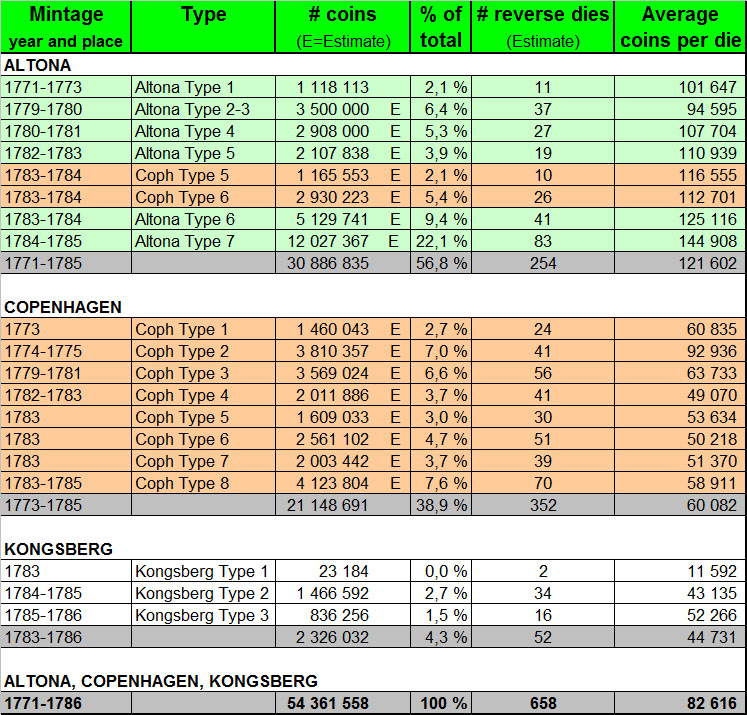Overview
This site was created in an effort to list (in chronological order) all dies that were used in the mintage of the 1 skilling 1771. Although our work is not yet complete (will it ever be?), we’ve so far found and listed 585 obverse and 642 reverse dies that makes up 988 die combinations of this mintage series. We would like to extend our thanks to Peter Poulsen for the use of several of his scans at http://www.steppeulvene.com/index.1771_skilling.html and to Frank Pedersen for valuable new insights into the chronology and origination of the coins. Many thanks also to Bjørn Kristian Wang and Jakob Rye for much appreciated contributions.
Mintage
